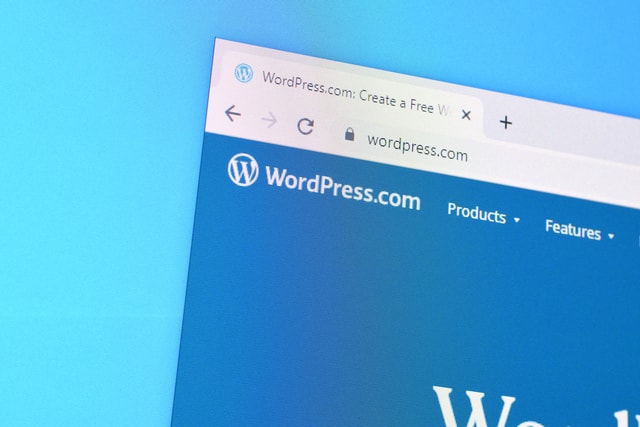 Marijana Gligoric
Marijana GligoricTop Trends in Custom Web App Development in 2024

With the final quarter of 2024 approaching, it’s a good time to recap some of the most significant trends in custom web app development that have left their mark this year.
Custom web applications are no longer a luxury but a necessity, with customers becoming increasingly sensitive to performance and ever more trigger-happy to leave if their experience isn’t up to par.
In this blog, we explore the top trends that businesses and developers need to pay attention to and explain why they are crucial for long-term success.
Why Is Web Application Development Relevant in 2024?

A decade ago, many businesses could still pull off having a static HTML website to meet all their user needs. As time passed and technology advanced, user behavior changed, making standard websites give way to more complex solutions like web applications.
Once users experienced the customization and personalization these new solutions provided, there was no going back. Today, custom web application development is a necessity and a norm for businesses that want to stay afloat as users' tastes are becoming more refined and the desire for tailored and unique experiences is growing.
Is Following Web Development Trends Worth It ?

Following web development trends is essential for businesses and developers because of the increasing speed at which technology progresses.
Anybody ignoring the trends risks being left by the side of the road as competition becomes more fierce, user attention shrinks, and the battle for performance and increasing user engagement ensues.
Those who keep pace with the trends can future-proof their businesses and careers and may gain a significant competitive advantage compared to their more stagnant counterparts.
Top 10 Trends in Custom Web Application Development in 2024

Investing in custom web application development is a wise choice for businesses as it can yield long-term and short-term benefits. The advantages of custom web applications are numerous, and we've listed just some of the more significant ones below:
-
They allow businesses control over building the app and how it functions, making them superior to cookie-cutter solutions with pre-set limitations.
-
Businesses retain complete control of their budget and spend resources at their own pace without paying for expensive licenses or features they won’t use.
-
Custom-built apps cater to specific business needs, which leads to efficiency and effectiveness.
-
Developers can design them to grow as the business grows and can easily be adapted to take on increasing volumes of users and traffic.
-
They allow businesses to implement security measures tailored to specific industry and regulatory requirements.
So, now that you understand why following development trends is necessary and how custom web applications present a strategic business investment – let’s get down to our list.
1. Progressive Web Apps

Since Google introduced the concept of Progressive Web Apps in 2015, the trend has been gaining momentum and will remain at the forefront in 2024.
These apps combine the simplicity and universality of ordinary web pages with the functionality of native mobile apps, providing both the users and developers with the best of both worlds.
They allow businesses to engage mobile users without extra costs for app development.
Here are some more of the advantages:
-
They are installed directly from a web browser and work on all devices regardless of the operating system
-
They are developed using standard web technologies (HTML, CSS, and JavaScript) and require less time and resources
-
Although they still can't match native apps in terms of performance, they’re faster than web pages
-
They can be used offline (with limited features)
-
They offer an app-like user experience from a browser window
2. No-Code/Low-Code Development Platforms

No-code and low-code development platforms are not a new concept. They have their roots in the late 1990s.
But today, in 2024, they’re one of the hottest web development trends, which isn’t surprising since there’s much to love about these platforms.
They significantly lower the barrier of entry for software development and allow people with little to no coding experience to unleash their inner programmers.
Simple drag-and-drop interfaces combined with visual workflows and templates make it so that even business users like project managers and marketers can create and manage apps without relying on developers.
They reduce costs by eliminating the need for large development teams. At the same time, they allow for rapid prototyping, meaning businesses can adapt to market changes quickly.
It all sounds pretty neat. So why aren’t all businesses using them? Well, despite these platforms providing a great way to test the market, they’re not a good long-term solution.
Custom web applications still reign supreme as they offer safeguards against copycats and allow for better scaling as the business grows.
They also mitigate some security vulnerabilities, as relying on third-party platforms carries the risk of a compliance breach with industry standards like GDPR and HIPAA.
Finally, low-code and no-code platforms offer limited customization options, meaning users will struggle or flat out won’t be able to roll out anything outside of the ready-made components on offer.
All these combined mean that custom web applications are still the way to go and that you, as a business owner, can sleep soundly knowing that any sudden increase in user numbers will be met with reliable software architecture.
3.JavaScript Frameworks

Want to hear a good horror story? 40% of users will leave a website if it takes more than 3 seconds to load. The sequel is even scarier, though – Google published this data in 2016, nearly a decade ago.
We don’t have to say it, but we will: regarding all things Internet, speed is neither significant nor essential – it is PARAMOUNT. The popularity of both single-page applications and progressive web applications can be attributed, in large part, to loading speeds that are closing in on native apps.
JavaScript frameworks like ReactJS and NodeJS, coupled with the NestJS runtime environment, are at the forefront of both single-page and progressive web apps, which is no surprise given the clear advantages of using a single programming language (JavaScript) for the entire development process.
Here are just some of the advantages that these web technologies offer when used in sync:
-
They have a strong community and are very popular, making access to relevant info a breeze.
-
The same developers can work both on the front end and back end, which boosts efficiency by eliminating the need for specialized teams and allows for reusing code.
-
They simplify writing code and maintaining it, as the same techniques apply across the entire code base.
-
Debugging is easier because switching between different debuggers and environments is not needed.
4. AWS Solutions

There are no surprises here; AWS will remain the world’s leading cloud platform in 2024, one that most web developers flock to because it offers many high-quality services.
It launched in 2006, and as the pioneer of the cloud computing scene, AWS established a large customer base and consistently expanded its service offering.
Today, it offers over 200 services that range from computing, databases, and storage to machine learning, analytics, networking, and many more.
The fact that Amazon’s data centers span the globe means that any web app that utilizes AWS is deployed close to the customer base, which makes for a high-quality user experience.
Compliance is never an issue as AWS complies with most regulatory standards (GDPR, HIPAA, ISO 27001, etc.), meaning customers can use these services in heavily regulated industries like finance and healthcare.
The pay-as-you-go pricing allows customers to spend money only on services they use and lets them scale their usage based on incoming traffic and demand.
Many major companies like Netflix, Slack, Airbnb, and General Electric rely on AWS for their cloud computing needs and, as things stand, will continue to do so in the future.
5. AI

If there’s a buzzword that sums up the 2020s so far, it has to be artificial intelligence. Love it or hate it, the genie is out of the bottle, and businesses are well aware.
A Gartner survey states that 61% of businesses would increase their technology budget in 2024. More interestingly, 92% are looking to invest in AI solutions despite operating in a cost-conscious environment.
Cost-consciousness and AI sound counterintuitive when used in the same sentence, but in this case, public opinion hits it out of the ballpark.
Implementing AI doesn’t have to break the bank. Sure, developing an entire AI solution dedicated to a single business from scratch is reserved for a privileged few.
Luckily, developing an entire system isn’t needed. Small and medium businesses can leverage AI-enhanced solutions that rely on techniques like machine learning and predictive analytics to:
-
Automate tasks
-
Improve decision-making using data
-
Analyze user behavior and personalize their offers to suit individual user needs
-
Boost efficiency by optimizing processes and reducing errors
Netflix, Amazon, YouTube, and other heavy hitters have spoiled us rotten with their predictive algorithms that constantly raise the bar for user experience by providing personalized results.
If you'd like to know how we at brigit.dev created Economia.ai, a Fintech and EdTech platform that offers a personalized experience to all its users, check out this case study.
6. Advanced UI/UX

Recently, Huawei unveiled an accordion-style phone that boasted a $2800 price tag and had the added effect of making scores of UI/UX designers worldwide rip their hair out in frustration.
Optimizing UI/UX for mobile devices has been a requirement for some time now. We can safely say that mobile-first development is the norm for custom web application development.
And it’s bound to stay that way with more and more users shirking their desktops and laptops in favor of handheld devices.
The constant emergence of devices with unconventional screens, IoT devices, and virtual reality is making designers adapt to new design paradigms.
Well-crafted web apps that offer a seamless user experience and intuitive design across devices are constantly popping up to the point where the markets are saturated. That’s why advanced UI/UX is one of the first things to consider when planning custom web application development.
Impeccable design is needed from the onset of web app development, starting with the MVP version of the app. Hiring developers with a working knowledge of psychology who know how to drive user engagement is a first step in the right direction.
If you’re interested in learning how gamification, one of the hottest UX trends out there, is used to influence user engagement, take a look at our blog post on the subject.
7. Blockchain

There’s been a lot of talk in the previous decade about cryptocurrencies.
The first cryptocurrency, Bitcoin, came into existence in 2009, and as of 2023, we have upwards of 25,000 cryptocurrencies, 40 of which have a market cap exceeding $1 billion.
In the last five years, financial institutions like JP Morgan, Goldman Sachs, and BlackRock provided crypto with some long-awaited legitimacy by offering crypto investment products, with JP Morgan going as far as launching its coin.
And while cryptocurrencies are exciting, blockchain, the technology underlying it, is even more exciting and has many uses beyond the scope of currencies.
Blockchain represents a digital ledger that uses a network of computers to record transactions in a decentralized way. Because no single entity controls the entire system, the ledger can be considered secure, transparent, and trustworthy.
Here’s a brief overview of the characteristics that make blockchain so useful:
-
Decentralized**:** Transactions are verified by multiple nodes in the network, eliminating the need for central authority.
-
Immutable**:** Tempering with a block is impossible once added to the chain.
-
Transparent**:** Transactions are kept in a publicly available ledger for all to see.
-
Secure**:** It uses advanced cryptography, making it immune to fraud and cyber-attacks.
Custom web application development stands to gain a lot from blockchain technology as web developers can use it to make their apps more transparent, secure, and cost-efficient.
8. Gamified Design

In 1958, physicist William Higinbotham created the first ever video game called Tennis for Two, a predecessor of the more famous Atari 1972 classic Pong. The game simulated a tennis match, with players moving a single dot on an oscilloscope screen using simple joysticks.
Today, video games are a multi-billion dollar industry, valued at $242 billion in 2023, and are likely to grow to $584 billion by 2030. People love video games; the proof is in the staggering growth.
The reason for the popularity is that games present people with tasks. Then, they use badges, scoreboards, or simply advancing the story to evoke a sense of achievement and progress for completing them.
It then seems logical that the same principles that make video games enjoyable can be applied outside of a gaming context to reap some of the same benefits. This practice of using game elements outside of a gaming context is called gamification.
We’ll skip the details. You can check out our comprehensive guide for those. We will say, however, that gamification works best when you need to sprinkle a dash of zest into your web applications to boost user engagement.
It meshes particularly well with EdTech, fitness apps, and task management web applications because it turns tasks that would otherwise be mundane into something fun and interactive.
If you’d like to learn more about how we successfully used gamification to breathe life into a task management platform, take a look at this case study.
9. Mobile Web App Development

2017 marks the first time internet traffic from mobile devices surpassed that of desktop computers. Since then, mobile users have steadily been gaining more ground, and in 2024, mobile traffic accounts for more than 60% of internet traffic.
Not only are users more likely to access the web using mobile devices, but around 55% of the online population used them to buy something in the previous month.
Today, we use phones for everything from shopping to socializing, gaming, and even more sensitive things like monitoring health and managing finances.
With this in mind, it’s clear that websites and platforms that are not optimized for mobile use risk alienating a majority of users and would lead to higher bounce rates and more missed opportunities down the line.
The numbers show that mobile-first development (a design strategy that prioritizes building websites and apps for mobile first and then scaling up) is the right choice for businesses that want to remain relevant in the coming years.
Building custom mobile web applications ensures a superior user experience for most internet users. And with the number of mobile web users rising steadily, businesses that leverage this approach can expect higher engagement, better conversions, and higher user satisfaction.
10. Voice Search Optimization

If there’s one thing Boomers, Gen Xers, and Millennials can agree on, voice search is phenomenal. Studies show that 58% of US consumers ages 25-34 use voice search daily, while 43% of consumers aged 55+ use it at least once a week.
With voice-activated devices, like Amazon’s Alexa and Google Assistant, constantly evolving and steadily making their way into more and more households, optimizing web apps for voice search is becoming less of a nice-to-have and more of a necessity.
The inevitable passing of the torch in user behavior, coupled with the strides in the fields of NLP (Natural Language Processing) and machine learning, ensures that businesses will seriously need to consider voice search optimization for their web applications to stay ahead of the curb.
Honorable Mentions

In our previous entries, we’ve highlighted some of the latest custom web application development trends for 2024. Many other trends didn’t make our top 10 list, but we still believe they deserve mentioning. So strap yourselves in and check out more of the latest trends we’ve compiled for you.
Motion UI
We've already mentioned that user-centric designs are crucial in today's saturated market. Motion UI is a design technique that promotes creating smooth and responsive animations to make the web app interface more intuitive and dynamic.
The trick is to breathe life into otherwise static elements. These newly-animated elements provide a sense of fluidity and responsiveness, resulting in better user engagement and a high quality user experiences.
IoT

IoT (Internet of Things) refers to groups of devices possessing sensors and software that enable them to connect and share data over the Internet.
Blending this ecosystem with web applications offers many possibilities for increasing efficiency and productivity in logistics, hospitality, healthcare, manufacturing, and many other fields.
Single Page Applications
SPAs (Single page applications) are JavaScript-based web applications that load and update content dynamically on a single HTML page. Once the page loads in the browser, new content is consistently available without constantly reloading the page.
Both web developers and users love them because they provide better performance by avoiding full-page reloads and offer a superior user experience comparable to native apps.
Virtual Reality

Virtual Reality represents a computer-generated environment that simulates the world in a seemingly authentic and genuine way. Its lure lies in the promise of an immersive experience that can imitate real-world sensations (visual, auditory, and even tactile) through a device (usually a headset).
As this technology evolves and intertwines with web application development, new experiences like a virtual tour of an online store or a class in an online classroom become evermore available.
Dark Mode

Dark mode is a UI feature that allows users to switch the color scheme of their websites and web apps from a light background with dark text to a dark background with light text.
Studies from the past few years have shown that most users adore dark mode. And what’s not to like? Dark mode offers a lot of visual appeal, puts less strain on the eyes, and conserves battery life, making this web app development trend one that will be active for years to come.
Accelerated Mobile Pages
We’ve already covered how speed is one of, if not the most important thing to consider when creating custom web applications. It’s no wonder that AMP (Accelerated Web Pages), a framework developed by Google in 2015 to create lightweight and fast mobile pages, is still among the leading web development trends today.
The framework strips down unnecessary code, scripts, and styles, thus ensuring optimal performance and stellar mobile app experiences.
Enhanced Accessibility

With internet usage becoming less of a convenience than a necessity, accessibility is growing in importance, and user friendly designs are becoming ever more crucial.
Web applications and websites need to be accessible using various devices, but more importantly, they need to be accessible to a diverse audience regardless of physical and cognitive abilities.
Microservice Architecture
A great way to solve complex problems is to break them down into small, manageable chunks and then deal with them one at a time. Microservice architecture is a development approach that does just that.
Developers can break down complex web applications into compact, independently deployable services. Each service represents a separate entity that communicates with other services through APIs but can tackle the task it was designed for independently.
Automation Testing

Manual testing can be a grueling and laborious process that burns through plenty of time and resources. Automation testing is a software testing method based on predefined test cases using specialized tools and scripts.
The process enables developers to test for bugs more precisely and efficiently and is particularly helpful with custom web applications as they require testing across different devices and browsers.
Data Security
As we already mentioned, people use web applications more and more frequently to handle sensitive tasks in areas as serious as healthcare and finance. Data leaks and cyber attacks are becoming the norm, and hackers are becoming craftier and craftier.
That’s why it’s more important than ever that devs implement cybersecurity measures when planning custom web application development so businesses and users don't get caught off guard.
WordPress Development

It may sound staggering, but as of 2024 over 43% of websites globally use WordPress. Having such a strong presence means that any changes WordPress introduces will likely influence the design and aesthetics across the entirety of the web.
Headless WordPress is a setup that allows developers to build custom web applications by using WordPress for content management on the backend and frameworks like React and Angular on the frontend. If you’re interested in how we used WordPress and React to create a user-friendly warehouse management system, check out this case study.
That's a Wrap

Wow, that was a lot to take in. Just keeping up is hard work. But if you’re a business owner or a developer, you must stay ahead of the curve.
Adopting these latest trends can significantly increase the quality of your web applications by enhancing user experience and strengthening performance, personalization, and customization – all things that remain on top of users’ priorities.
Businesses that adopt these innovations stand to gain a lot by positioning themselves to deliver better, faster, and more secure services to their customer base. Moreover, staying up to date ensures long-term growth and competitiveness, objectives that all businesses, regardless of size and industry aspire to.
Get a Head Start on Building Your Custom Web Application

If you’re feeling overwhelmed by all these trends, don’t worry. Our team at brigit.dev adores trends and loves lending a helping hand to businesses in need of cutting-edge web apps.
Whether you’re looking to:
-
Build a custom web application with functional yet pleasing features
-
Create a mobile app that’s intuitive and uses psychology to engage and retain users
-
Implement a blockchain solution that guarantees the latest security standards
-
Spruce up your UI/UX with a compelling and up-to-date interface
-
Any combination of the above
We combine the stern logic of software developers with the business savvy of marketers to help you thrill that special someone your business hinges on – your end user.
So, if you're interested in what we’re all about, you can contact us here.